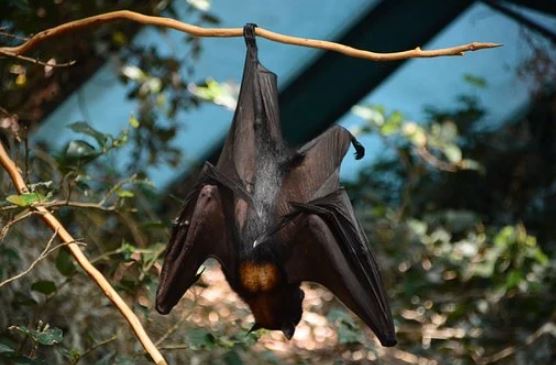London: A coronavirus related to the virus that causes Covid-19 in humans has been found in UK horseshoe bats. It is the first time that a sarbecovirus (SARS-related coronavirus) has been found in a horseshoe bat and the first to be discovered in the UK.
However, there is no evidence that this novel virus has been transmitted to humans, or that it could in future, unless it mutates, said researchers from the University of East Anglia, Zoological Society of London (ZSL), and Public Health England (PHE).
UEA researchers collected faecal samples from more than 50 lesser horseshoe bats in Somerset, Gloucestershire and Wales and sent them for viral analysis at the PHE. The findings have been published in the journal Scientific Reports.
Genome sequencing found a novel coronavirus in one of the bat samples, which the team have named ‘RhGB01’. RhGB01 falls within the subgroup of coronaviruses called sarbecoviruses which contains both SARS-CoV-2 (responsible for the current pandemic) and SARS-CoV (responsible for the initial 2003 SARS outbreak in humans).
They noted that these bats will almost certainly have harboured the virus for a very long time — probably many thousands of years. It has been found now, because this is the first time that they have been tested. RhGB01’s closest relative was discovered in a Blasius’s bat from Bulgaria in 2008, further analysis showed.
Importantly, RhGB01 is unlikely to pose a direct risk to humans, because the receptor binding domain (RBD) — the part of the virus that attaches to host cells to infect them — is not compatible with being able to infect human cells. However, if it mutates — a mutation could happen if a human infected with Covid-19 passes it to an infected bat — and anyone comes into contact with bats or their droppings, can get infected, the researchers said.
“Horseshoe bats are found across Europe, Africa, Asia and Australia and the bats we tested lie at the western extreme of their range,” said Professor Diana Bell, an expert in emerging zoonotic diseases from UEA’s School of Biological Sciences.
“Similar viruses have been found in other horseshoe bat species in China, South East Asia and Eastern Europe. Our research extends both the geographic and species ranges of these types of viruses and suggests their more widespread presence across more than 90 species of horseshoe bats,” she added.
Further, Bell said there are different coronaviruses in many other mammal species too. But the research into the origins of SARS-CoV-2, the virus that causes Covid-19 in humans, has focussed only on horseshoe bats. There are some 1,400 other bat species and they comprise 20 per cent of known mammals.
The researchers stated that the natural distribution of sarbecoviruses and opportunities for recombination through intermediate host co-infection have been underestimated.
And “…any bat harbouring a SARS-like coronavirus can act as a melting pot for virus mutation. So if a bat with the RhGB01 infection that we found were to become infected with SARS-CoV-2, there is a risk that these viruses would hybridise and a new virus emerge with the RBD of SARS-CoV-2, and so be able to infect people,a Prof Andrew Cunningham, from the Zoological Society of London, said:
“Preventing transmission of SARS-CoV-2 from humans to bats, and hence reducing opportunities for virus mutation, is critical with the current global mass vaccination campaign against this virus,” he noted. The researchers also urged the need for applying stringent regulations globally for anyone handling bats and other wild animals.






































